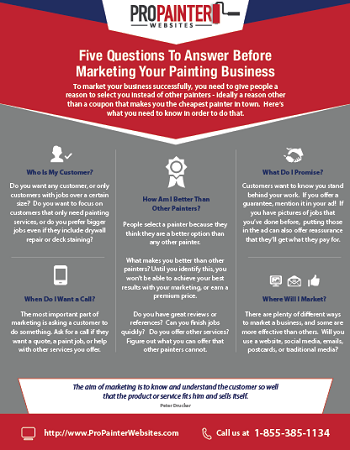Recognizing Seasonal Influences On Commercial Exterior Paint: Necessary Understanding For Success
Recognizing Seasonal Influences On Commercial Exterior Paint: Necessary Understanding For Success
Blog Article
Author-Burnham Decker
When you're intending a business exterior paint job, seasonal factors can make or break your results. You'll intend to think about just how temperature and humidity impact paint application and drying out times. Choosing the appropriate season can ensure your paint adheres correctly and lasts longer. However which periods are absolutely the best for this type of job? Let's discover the key elements that can impact your job's success.
The Effect of Temperature Level on Paint Application
When you're intending a business outside painting job, the temperature level can significantly influence exactly how well the paint sticks and dries.
Preferably, you wish to paint when temperature levels range in between 50 ° F and 85 ° F. If it's too chilly, the paint might not heal correctly, leading to concerns like peeling off or breaking.
On the other hand, if it's as well warm, the paint can dry out too quickly, avoiding correct attachment and causing an unequal coating.
You must also take into consideration the time of day; early morning or late afternoon provides cooler temperature levels, which can be a lot more favorable.
Always examine the maker's suggestions for the particular paint you're utilizing, as they commonly give guidance on the perfect temperature variety for optimal outcomes.
Humidity and Its Result on Drying Times
Temperature level isn't the only ecological factor that influences your industrial external painting project; humidity plays a significant function too. High moisture degrees can reduce drying out times drastically, influencing the total high quality of your paint job.
When the air is saturated with dampness, the paint takes longer to heal, which can result in concerns like bad adhesion and a greater danger of mildew growth. If commercial painting contractors on a particularly humid day, be planned for extensive delay times between layers.
simply click the following site to check neighborhood weather conditions and plan as necessary. Preferably, go for moisture degrees in between 40% and 70% for optimal drying out.
Keeping these factors in mind guarantees your job remains on track and supplies a lasting finish.
Best Seasons for Commercial Exterior Paint Projects
What's the very best time of year for your industrial external painting projects?
Spring and early fall are normally your best bets. During these seasons, temperatures are moderate, and humidity degrees are typically lower, creating perfect problems for paint application and drying out.
Stay clear of summer season's intense heat, which can cause paint to completely dry as well rapidly, resulting in bad attachment and finish. In a similar way, wintertime's cold temperatures can impede appropriate drying out and curing, taking the chance of the longevity of your paint job.
Aim for days with temperatures between 50 ° F and 85 ° F for optimal results. Keep in mind to inspect the regional weather prediction for rain, as wet conditions can destroy your job.
Planning around these elements ensures your painting project runs efficiently and lasts much longer.
Conclusion
In conclusion, planning your commercial exterior paint tasks around seasonal factors to consider can make a significant difference in the result. By scheduling job during the perfect temperatures and humidity degrees, you'll guarantee much better adhesion and drying out times. Keep in mind to watch on regional weather report and pick the right time of year-- spring and early autumn are your best bets. Taking these actions will help you achieve a durable and professional coating that lasts.
